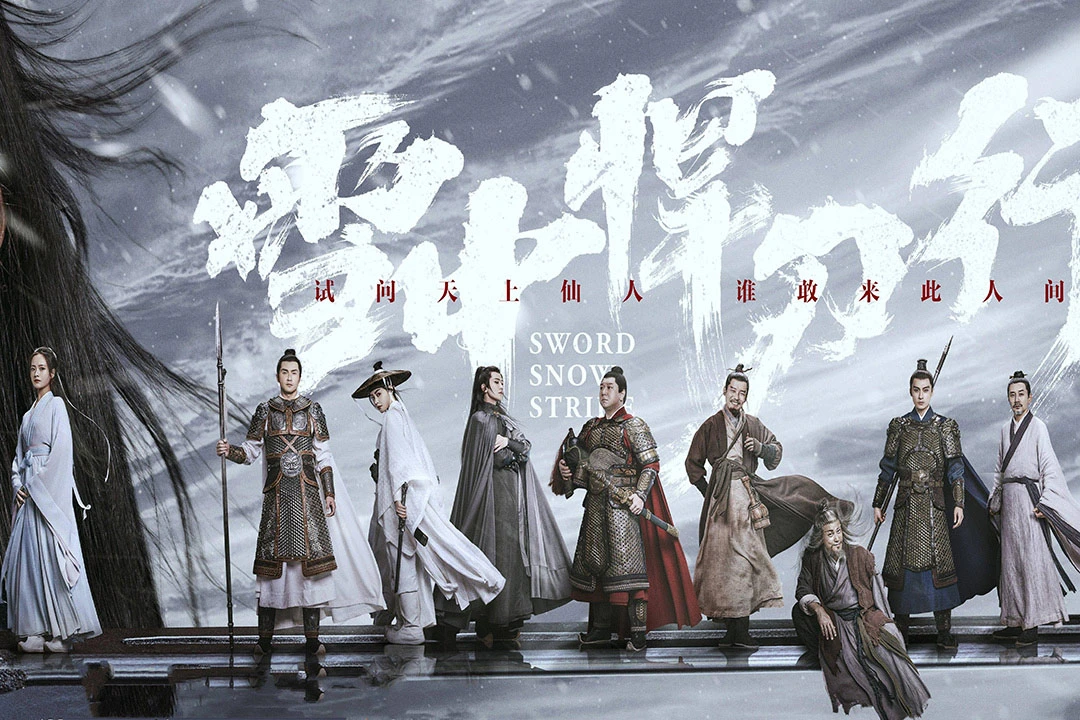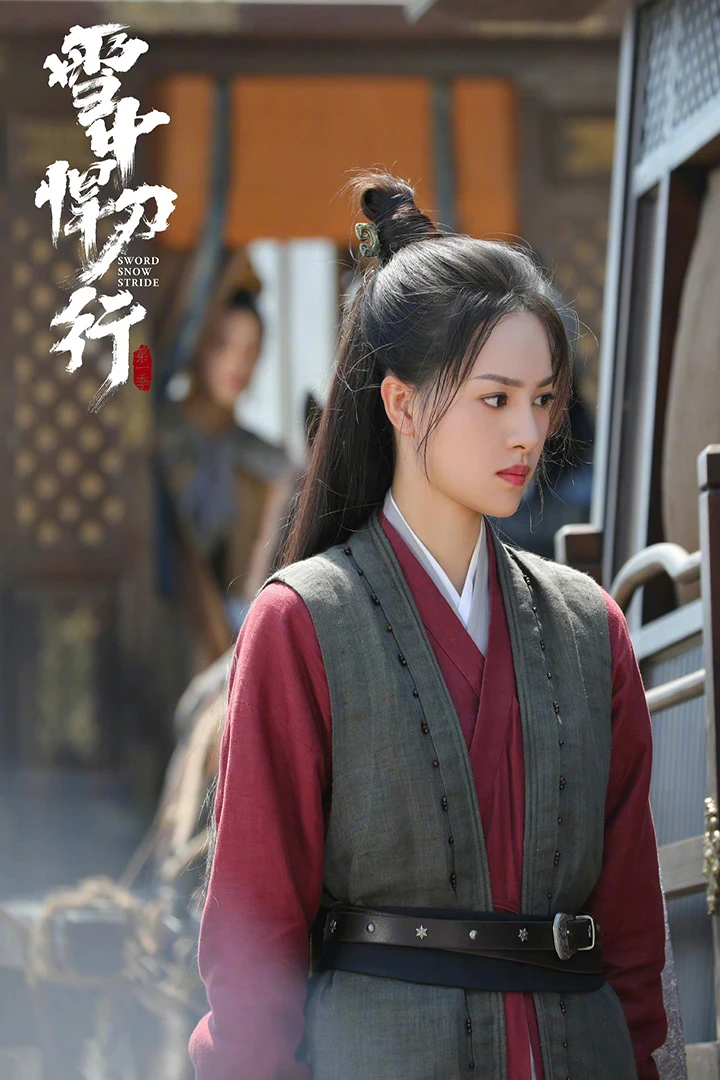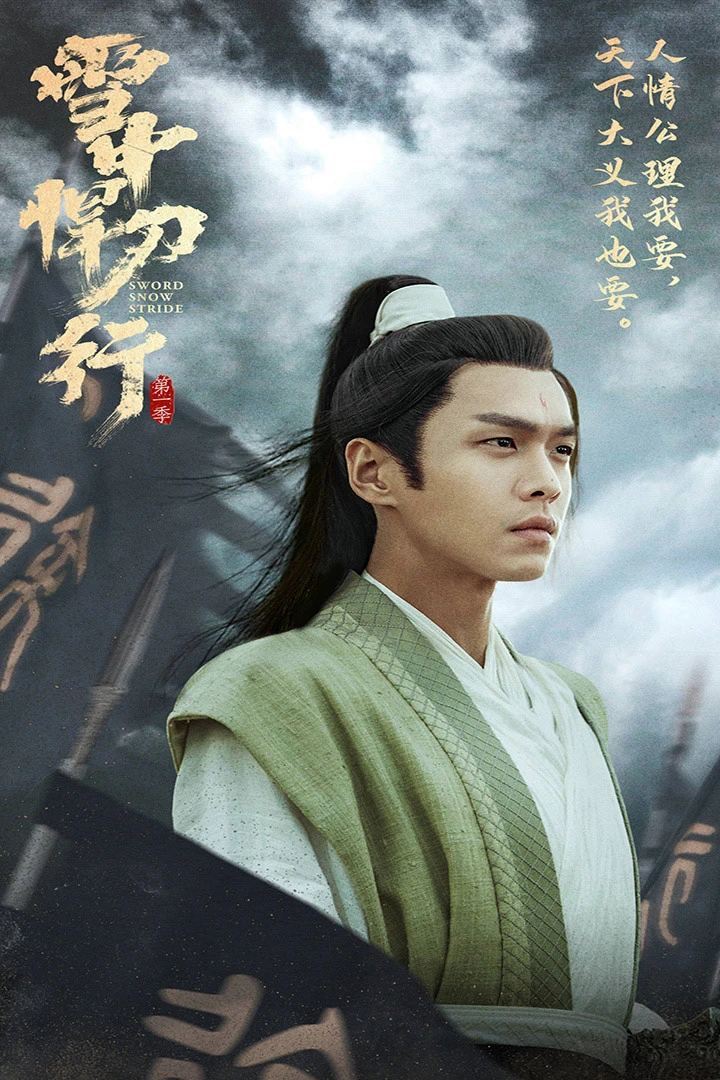The TV series “The Sword in the Snow,” adapted from the novel of the same name by the online writer Fenghuoxizhihou, is a bold attempt at innovating the wuxia genre. With its unconventional narrative techniques, classical impressionistic style, and core focus on the spirit of martial arts, the series has successfully brought the carefree world of Jianghu and the struggles of the imperial court to life through the lens of Eastern fantasy elements.
One of the most striking features of “The Sword in the Snow” is its unconventional narrative approach to the protagonist’s growth. Unlike traditional wuxia heroes who are often “passively” shaped by their family’s influence, the main character Xu Fengnian experiences a reverse growth, concealing his “genius talent” under the guise of a “spoiled son.” This subversive narrative mode gives the story a distinct character. Instead of dwelling on the protagonist’s entire upbringing, the story begins with Xu Fengnian’s first journey into the Jianghu, directly shaping his mature personality and charm.
Moreover, Xu Fengnian’s deliberate concealment of his true abilities in both the Jianghu and the imperial court creates a striking dramatic conflict as he protects peace and justice in his own way. Furthermore, by defying his father Xu Xiao’s wishes and following his own heart and convictions, Xu Fengnian presents a narrative of reverse growth through “rebellion.” This individual choice and the consequences of self-driven actions become a crucial driving force for the plot development.
In terms of aesthetics, “The Sword in the Snow” showcases the graceful and unrestrained spirit of the Wei and Jin dynasties through its characters and ambiance, despite being a fictional historical story. The series not only creates numerous visually stunning scenes that rival classical paintings but also imbues these images with a unique poetic beauty and artistic conception of the East, resulting in a distinctive cinematic quality and imaginative expression. For instance, as Xu Fengnian re-enters the Jianghu as the Prince of Beiliang, the series depicts a world of mountains and rivers shrouded in misty rain, from the desolate beauty of Beiliang to the landscape of Wudang Huishan and the coastal scenery of Wudi City.
In its treatment of action scenes, “The Sword in the Snow” employs an impressionistic approach based on traditional wuxia aesthetics, emphasizing the elegance and beauty of movements. As director Song Xiaofei explains, “Although you may not see how a character throws a punch, we have incorporated facial distortions and other physical reactions to make the audience involuntarily ponder what happened in that instant and the skill level of the combatants. This is an impressionistic technique based on realistic principles.” The series presents a poetic beauty in scenes such as Nangong Fushi’s entrance in white robes amidst the snow, Xu Fengnian’s coming-of-age ceremony in the snow, and the fantastical aesthetics of the final battle between Li Chungang and Wang Xianzhi, where the gates of heaven open, all showcasing classical artistic conception and charm.
In traditional wuxia dramas, the feuds of the Jianghu and the power struggles of the imperial court are often two independent narrative threads. However, “The Sword in the Snow” seamlessly integrates the Jianghu and the court, creating a harmonious blend of “clouds and mud.” The series uses this narrative technique to present the emotional spectrum of the protagonist Xu Fengnian: on one hand, he strives to achieve the warmth and harmony of his family; on the other hand, he aims to bring stability and peace to the world. This form of expression, which is based on family narrative and takes the world’s situation as its main thread, aligns with modern society’s understanding of patriotism and the relationship between family and country.
Xu Fengnian’s care for the lives of Beiliang’s veterans, his appropriate arrangements for the family of Beiliang’s secret agent Wang Linquan, and his accurate analysis of the world’s situation all serve to interpret his image and bearing as the new generation of Beiliang’s king, who is concerned about the people and has the world in his heart. Xu Fengnian embodies a sense of modernity, highlighting human subjectivity. The shift in values from pursuing personal freedom and enjoyment to taking responsibility for the rise and fall of the nation is of great significance. Artistic creation should be people-centered, satisfying people’s spiritual needs and enhancing their spiritual strength. “The Sword in the Snow” reflects the means and paths of creatively transforming and elevating traditional culture in the context of modernity, connecting with the spirit of the current era through the transfer of values from the individual to the national level.
The creation of “The Sword in the Snow” breaks through the confines of traditional wuxia dramas, which often lack substance in their dialogue scenes. Based on the narrative of patriotism, it accurately expresses the brotherhood and chivalrous spirit of the Jianghu, embodied in the phrases “becoming brothers upon landing” and “stepping forward when witnessing injustice.” In an era where wuxia is gradually fading, “The Sword in the Snow” boldly innovates while paying homage to the classics, creating the concept of “new wuxia.”
The success of “The Sword in the Snow” lies in its ability to breathe new life into the wuxia genre by subverting traditional narrative patterns, embracing classical aesthetics, and infusing the story with a strong sense of patriotism and modern values. The series demonstrates that wuxia, a genre deeply rooted in Chinese culture, can still captivate audiences when adapted to the tastes and expectations of contemporary society. By striking a balance between honoring the essence of the genre and exploring new creative possibilities, “The Sword in the Snow” has set a new standard for wuxia dramas and paved the way for future innovations in the field.



